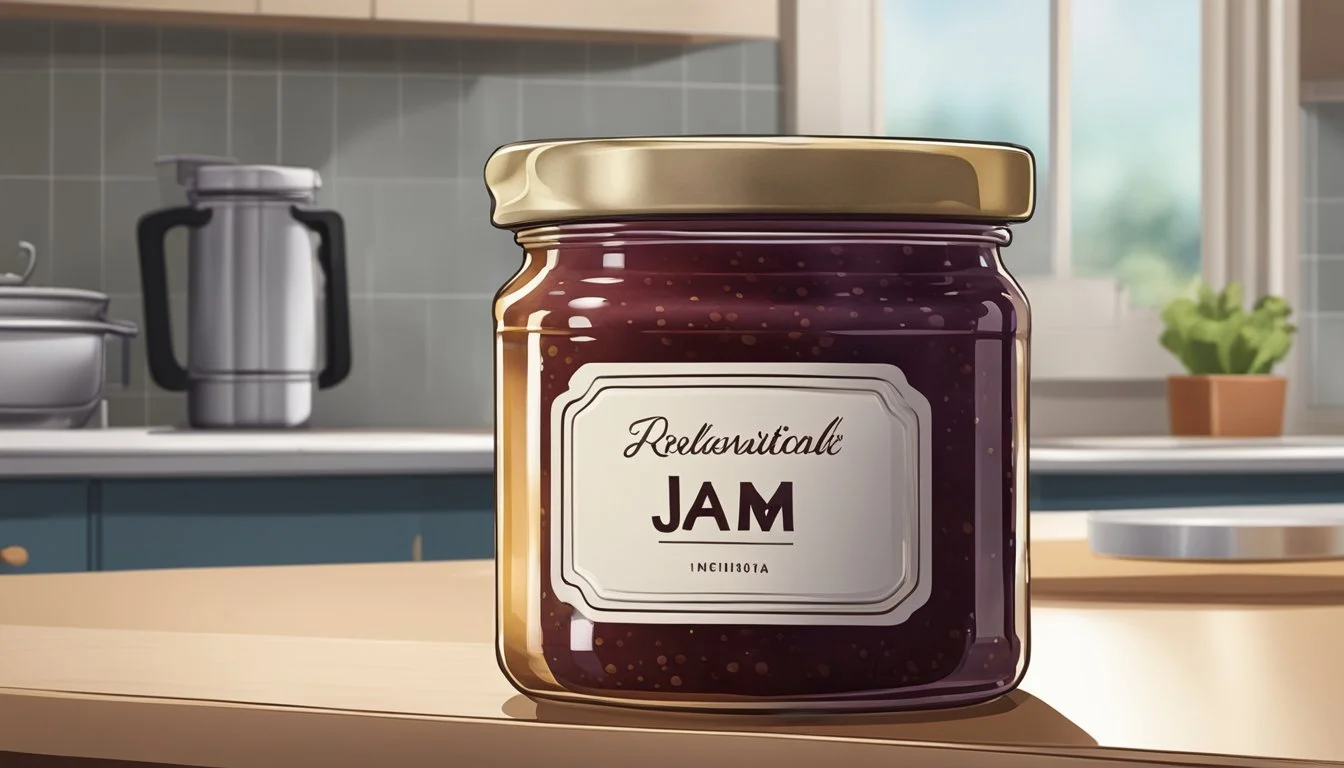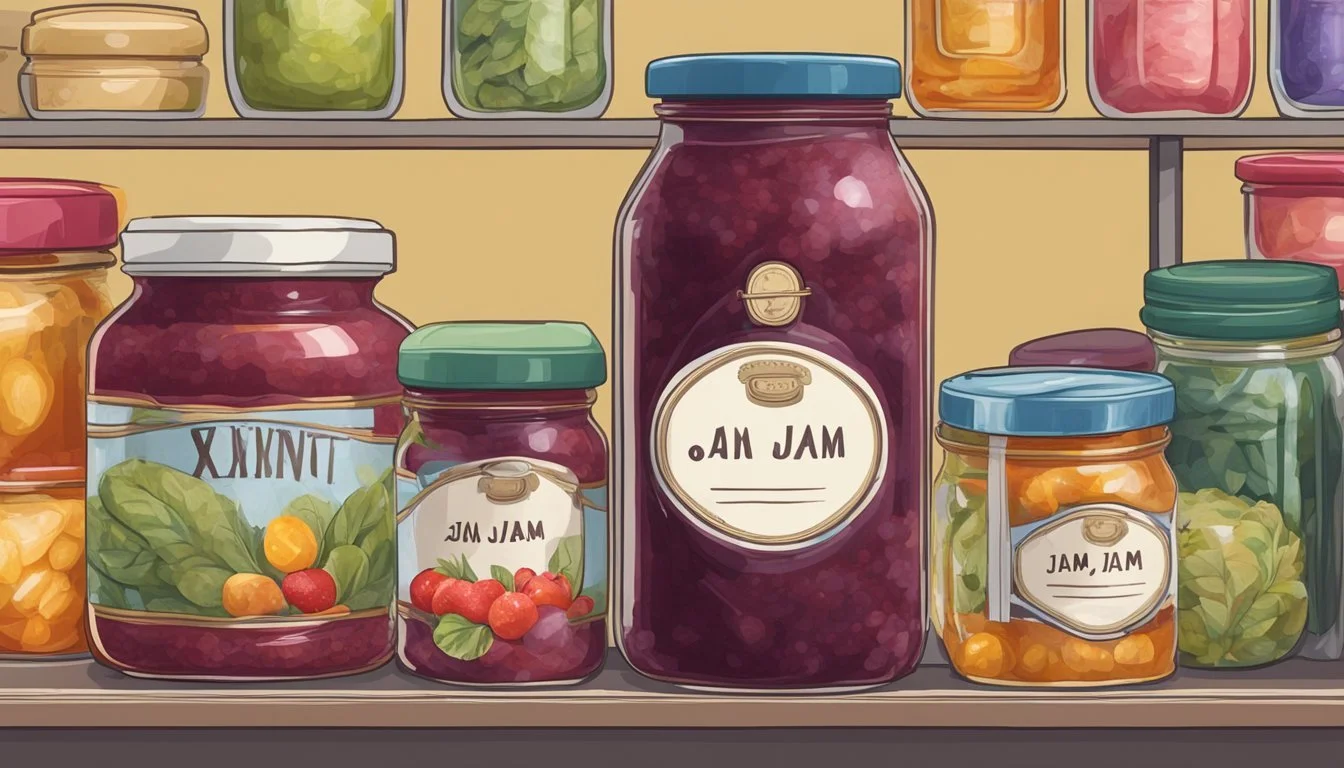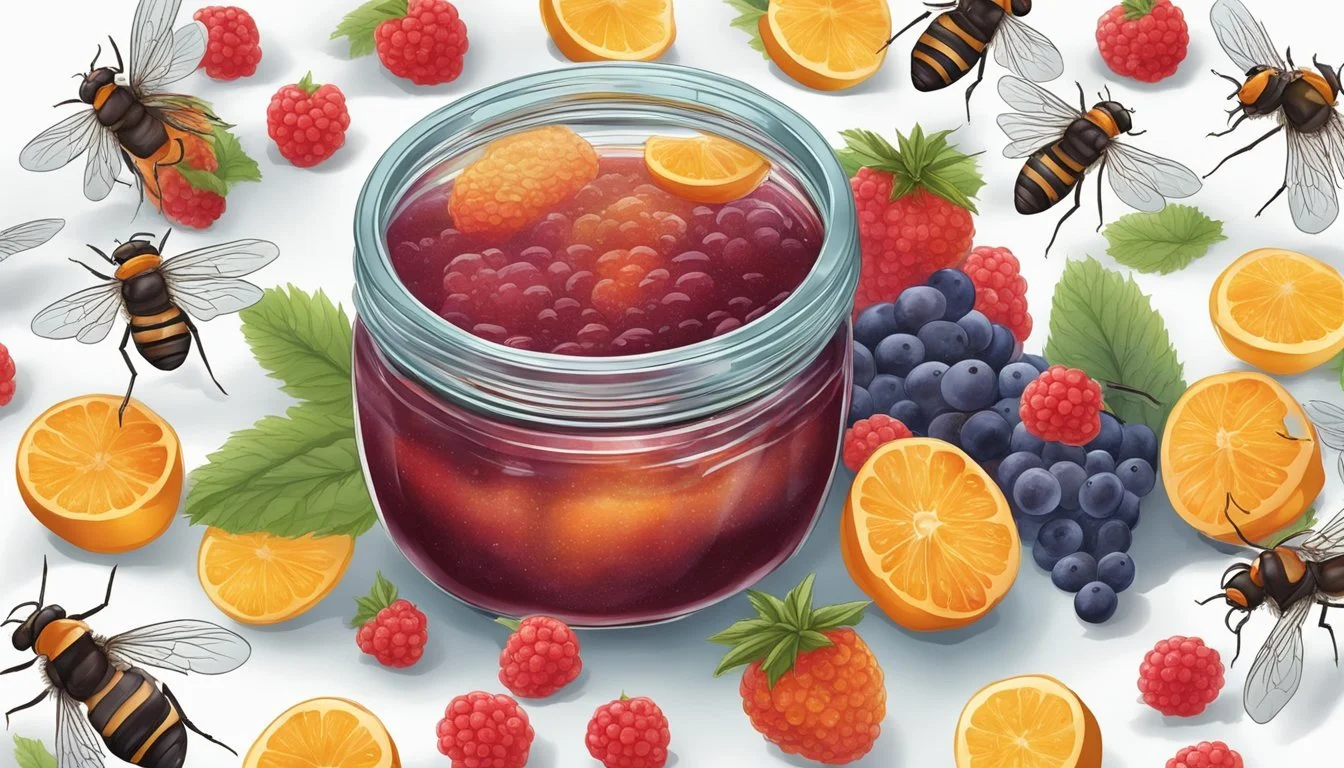Does Jam Go Bad?
Shelf Life and Storage Tips
Jam is a beloved staple in many households, but many wonder, “Does jam go bad?” The answer is yes, jam can indeed go bad. Most jams, whether store-bought or homemade, have a shelf life that ranges from several months to a couple of years. Key factors such as sugar content and preservatives play crucial roles in prolonging the quality and safety of jams.
Sugar acts as a natural preservative, inhibiting the growth of mold and bacteria. Jams with higher sugar content tend to last longer, while low-sugar and sugar-free varieties have shorter shelf lives. Homemade jams, depending on the recipe and storage conditions, often do not contain as many preservatives as commercial options, making careful storage even more critical.
Proper storage is essential to maintaining the quality of jams and jellies. They should be kept in a cool, dark place, away from direct sunlight, which can cause changes in flavor and color. Once opened, it's best to refrigerate jam to extend its freshness. Signs of spoilage include mold growth, off-putting odors such as sour or fermented smells, and changes in texture, signaling that it’s time to toss the jar.
Composition of Jams and Jellies
Jams and jellies are typically made from a simple combination of fruit, sugar, pectin, and water.
Fruit serves as the primary ingredient, providing flavor and natural sweetness. The type of fruit used significantly influences the final product's taste and texture.
Sugar is added not only for sweetness but also as a natural preservative. It helps to inhibit the growth of microorganisms, extending the shelf life of jams and jellies. The sugar content can vary, with full-sugar varieties generally containing a higher percentage.
Pectin is a natural thickening agent found in many fruits. It is essential for achieving the gel-like consistency that is characteristic of jams and jellies. Some fruits naturally have high pectin levels, while others require added pectin to set properly.
Water is used to dissolve the sugar and pectin, allowing them to integrate effectively with the fruit. The amount of water can vary based on the desired consistency of the final product.
Additional ingredients, such as lemon juice, may be included to balance acidity and enhance flavor. The combination and ratio of these ingredients determine the texture, flavor, and preservation qualities of the jam or jelly.
Typical Ingredients in Jams and Jellies:
Ingredient Function Fruit Provides flavor and natural sweetness Sugar Acts as a preservative and sweetener Pectin Thickening agent to achieve proper gel Water Dissolves sugar and pectin Lemon Juice (optional) Balances acidity and enhances flavor
The careful balance of these components is crucial for producing high-quality jams and jellies that are both delicious and have a desirable texture.
Factors Affecting Freshness
The longevity of jam depends on various factors including exposure to heat and sunlight, moisture levels, and microbial growth. Understanding these elements can help in ensuring that your jam stays fresh and safe to consume for as long as possible.
Exposure to Heat and Sunlight
Exposure to high temperatures and direct sunlight can significantly affect the freshness of jam. When jam is stored near a heat source or in sunlight, it can lead to changes in color, texture, and overall quality.
Heat accelerates the breakdown of the jam's ingredients, causing it to lose its flavor and consistency faster. It's advisable to store jam in a cool, dark place to maintain its quality.
Moisture and Water Activity
Moisture plays a crucial role in the spoilage of jam. High water activity provides an ideal environment for mold and bacteria to thrive.
To keep jam fresh longer, it's essential to ensure that no moisture enters the jar after it's been opened. Always use a clean, dry spoon to scoop out jam and tightly seal the jar after each use.
Microbial Growth
Microorganisms like mold, yeast, and bacteria can spoil jam if not properly managed. Sugar acts as a natural preservative, restricting microbial growth by reducing water activity through osmosis.
However, once opened, jams are more prone to mold growth and bacterial contamination, which can produce harmful mycotoxins. Regularly check for signs of spoilage such as mold, strange odors, or changes in texture to ensure the jam remains safe to consume.
Shelf Life and Preservation
Jam can last a long time if stored properly. Shelf life greatly varies depending on whether the jar is opened or still sealed, and different storage methods can affect the longevity of the product.
Determining Shelf Life
The shelf life of jam can be influenced by several factors, including sugar content and packaging. Unopened jars of store-bought jam typically have a shelf life of 1-2 years. Once opened, the shelf life drops significantly, often ranging from a few weeks to a few months.
Higher sugar content acts as a natural preservative, extending the shelf life. Always check the expiration date or best by date on the jar for a more accurate timeline.
Storage Guidelines
Proper storage is crucial for maintaining the quality of jam. Unopened jars should be kept in a cool, dark place like a pantry or cupboard. This helps prevent any degradation that might be caused by heat or direct sunlight.
Once opened, refrigerate the jam to extend its shelf life. Make sure it is tightly sealed to avoid exposure to air and contaminants. Using clean utensils each time you scoop out jam helps prevent spoilage.
Preservation Methods
Several methods can extend the shelf life of jam. Canning involves cooking the jam and sealing it in sterile containers, which can prolong the shelf life to over a year if done correctly. Freezing jam is another option, allowing it to last up to six months.
Home-made or purchased freezer jam should be stored in the refrigerator for up to three weeks once thawed. Freezing helps maintain flavor and quality, making it a viable option for long-term storage.
Identifying Spoilage
Knowing how to identify spoiled jam can prevent health risks and ensure that only quality products are consumed. Several signs can help determine if jam has gone bad, including changes in appearance, texture, odor, and taste. Potential health risks associated with consuming spoiled jam are also significant.
Visual and Textural Changes
Spoiled jam often shows noticeable changes in its appearance and texture. Mold is a primary indicator; look for green, blue, or white spots on the surface. Any presence of mold signifies spoilage, and such jam should be discarded immediately.
A change in color is another sign. For instance, strawberry jam that turns from vibrant red to dull brown is likely no longer safe. Additionally, if the jam develops an unusual texture, such as becoming excessively runny or too thick and crystallized, it is best to avoid consumption.
Odor and Taste Differences
Unpleasant odors are a strong indicator that jam has gone bad. Fresh jam should have a sweet, fruity aroma. If the jam emits a sour or fermented smell, it is a sign of spoilage.
Changes in taste also signal spoilage. While the taste might still be sweet, an off-putting flavor, such as bitterness or sourness, suggests that the jam is no longer safe to eat. Avoid tasting jam that looks or smells spoiled as it can pose health risks.
Health Risks of Spoiled Products
Consuming spoiled jam can lead to several health problems. Moldy jam might contain harmful mycotoxins, which can cause food poisoning. Symptoms may include stomach cramps, nausea, vomiting, and diarrhea.
In severe cases, mycotoxins and bacterial contamination present in expired jam can lead to chronic health issues if ingested over time. It is crucial to thoroughly inspect the jam before use to avoid these risks and ensure food safety.
Types of Jam and Their Longevity
The longevity of jams can significantly vary based on whether they are commercially produced or homemade, as well as the specific type of fruit spread, such as jelly or preserves. Different preservation methods and ingredients alter the shelf life of these spreads.
Commercial vs. Homemade Jam
Commercial jams are often produced with preservatives and rigorous sanitization processes. This enables them to have a longer shelf life, typically around 12 months when unopened and stored in a cool, dark place.
Homemade jam lacks added preservatives, reducing its shelf life. When unopened and properly stored, homemade jams can last between 6 to 12 months. Once opened, both types of jam should be refrigerated, but commercial jams may last longer, around 1 to 6 months, compared to homemade jams, which may only last 1 to 3 months.
Refrigeration is crucial after opening to prevent spoilage. Factors such as mold growth, off smells, and changes in flavor indicate that the jam has gone bad and should be discarded.
Variations in Fruit Spreads
Different types of fruit spreads, including jams, jellies, and preserves, have varying shelf lives due to their ingredients and preparation methods:
Strawberry jam, blueberry jam, and apricot jam: These retain their best quality for around 12 months unopened; once opened, they should be used within 1 to 3 months.
Freezer jams are a type of homemade jam stored in the freezer, extending their longevity to up to a year in frozen state. Once thawed, they must be consumed within a few weeks.
Fruit preserves and fruit butter: Preserves, containing whole fruit chunks, and fruit butter, known for its smooth texture, last up to a year unopened. Post opening, they should be consumed within a month.
Understanding the specific characteristics and storage needs of these various spreads ensures they remain safe and enjoyable to eat for as long as possible.
Proper Jam Utilization
Jam can be enjoyed in many ways, from simple pairings to creative culinary uses. Here, we explore how to make the most of your jam supply.
Serving and Pairings
Toast and Bread: The classic combination of jam on toast is a favorite breakfast or snack option. Whether it's strawberry, peach, or apricot, spreading jam on freshly toasted bread is a simple treat.
Cheese and Charcuterie Boards: Pairing jam with cheese, especially brie or goat cheese, on a charcuterie board adds sweetness that complements the savory flavors.
Desserts: Use jam as a topping for desserts like cheesecake, ice cream, or pancakes. It can also serve as a filling for pastries such as danishes, croissants, and thumbprint cookies.
Yogurt and Granola: Stirring a spoonful of jam into yogurt with granola creates a delicious, fruity breakfast or snack.
Creative Cooking Ideas
Glazes and Marinades: Jam can be used to create glazes or marinades for meats. For example, a blackberry jam glaze pairs well with pork or chicken.
Salad Dressings: Incorporating jam into vinaigrettes adds a hint of sweetness. Mix jam with olive oil, vinegar, and mustard for a unique salad dressing.
Sauces and Condiments: Make a fruity sauce by combining jam with balsamic vinegar, which can be drizzled over vegetables or meats. Jams like raspberry or mango can be perfect for this.
Baking: Jam can be added to batter for cakes or muffins to provide bursts of fruit flavor. It can also be swirled into cheesecake or used as a layer in a trifle.
By leveraging these methods, you can maximize the versatility and enjoyment of your jams.
Shopping and Storage Considerations
When purchasing jam, it’s vital to inspect the packaging. Look for airtight seals on jam jars to ensure freshness. Check the "best by" date for unopened jam. This indicates how long the jam will maintain optimal quality.
Storing jam properly is key to extending its shelf life. Unopened jam should be kept in a cool, dark place such as a pantry.
After opening, refrigerate the jar to preserve freshness. Opened jars should be consumed within 1 to 2 months for commercially produced jam or 1 to 3 months for homemade variants.
Here’s a quick reference for storing jam:
Condition Storage Location Shelf Life Unopened Pantry/Cool place 12-24 months Opened Refrigerator 1-2 months (commercial) Opened Refrigerator 1-3 months (homemade) Freezer Jam Freezer Up to 6 months
Always inspect opened jam for signs of spoilage, such as mold or off smells, before use. Proper storage will maintain the flavor and safety of your jam.
Health and Nutritional Information
Jams are popular for their sweetness and fruity flavors, but it's important to be aware of their health and nutritional aspects.
Nutritional Content
Different types of jam like strawberry, blueberry, apricot, and lemon vary slightly in their nutritional profiles. For instance, a tablespoon of typical strawberry jam contains:
Calories: 25
Fat: 0 g
Carbs: 6 g
Sugar: 5 g
Protein: 0 g
Benefits
Jam retains some health benefits of fruit, particularly antioxidant properties which help reduce the risk of heart disease and certain cancers. For pregnant women, jam can be a minor source of essential nutrients that aid in fetal development.
Low-Sugar and Sugar-Free Options
Low-sugar and sugar-free jams are available for those watching their sugar intake. For example, Smucker's Low-Sugar Strawberry Preserves offer:
Calories: 25 (half of regular jam)
Added Sugar: 5 g
Sugar-free variants usually have a shelf life of six to nine months when unopened and stored properly.
Expiration and Food Safety
Expired jam can pose serious health risks. Harmful bacteria like Clostridium botulinum can develop, leading to botulism, a potentially fatal condition. Jams should be consumed before their expiration date to avoid such risks.
Storage Tips
To maintain freshness and nutritional quality, store jam in a cool, dark place away from direct sunlight. Once opened, it should be refrigerated and consumed within a reasonable time frame.
Understanding these elements can help one make informed choices about including jams in their diet.










